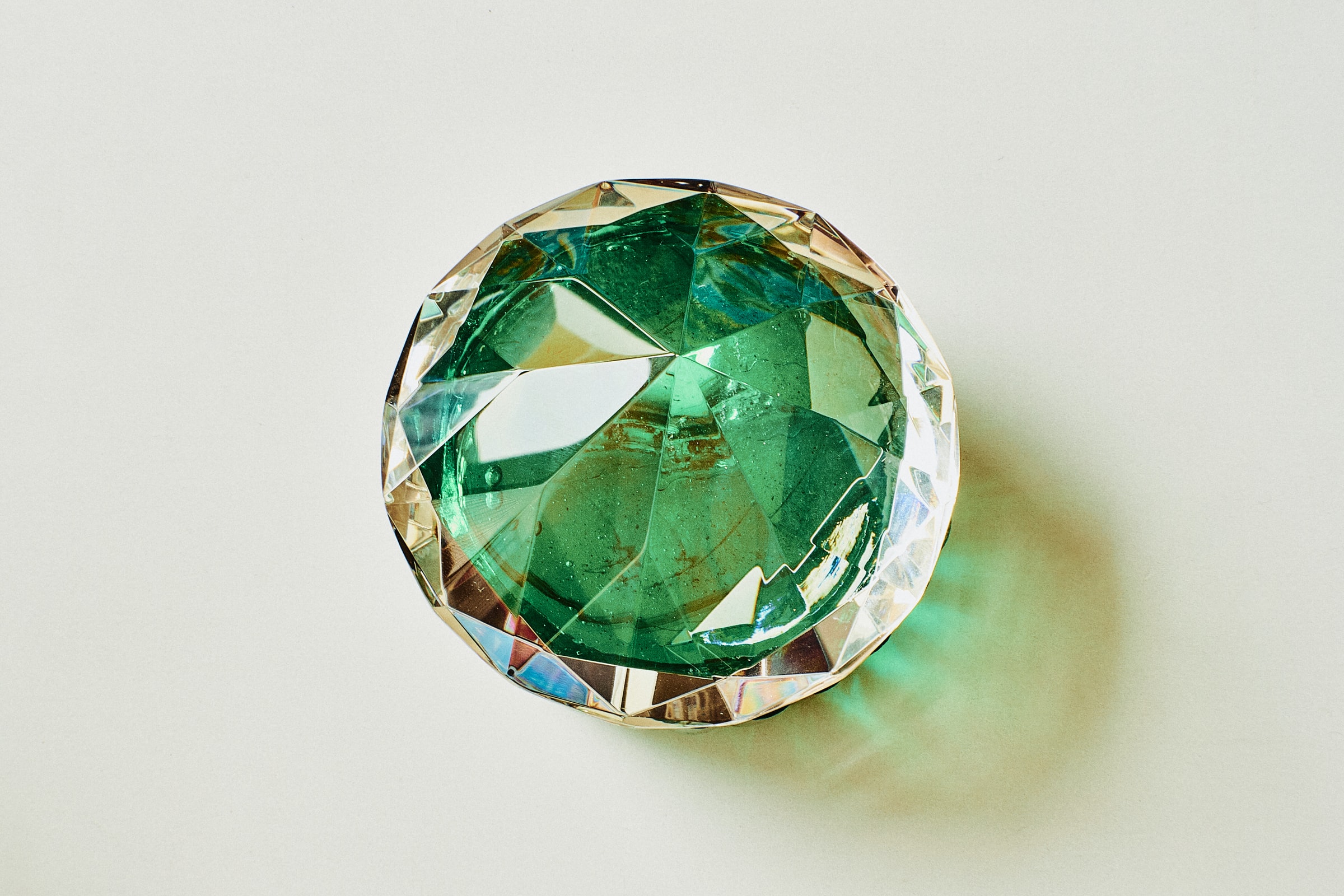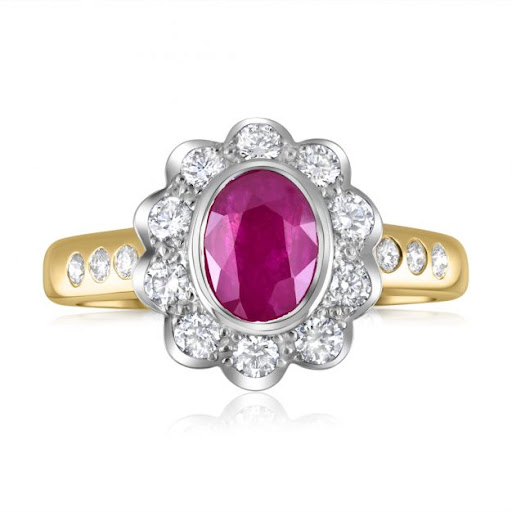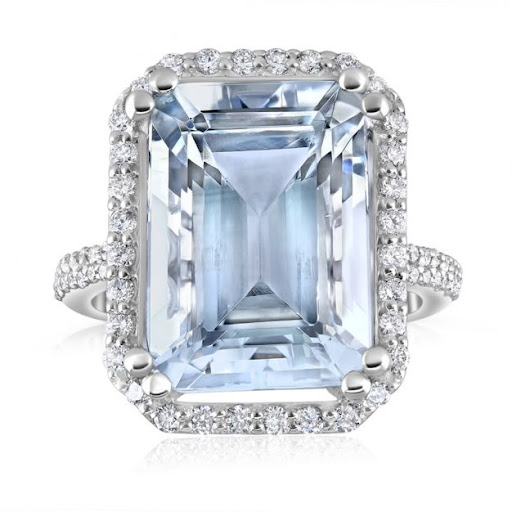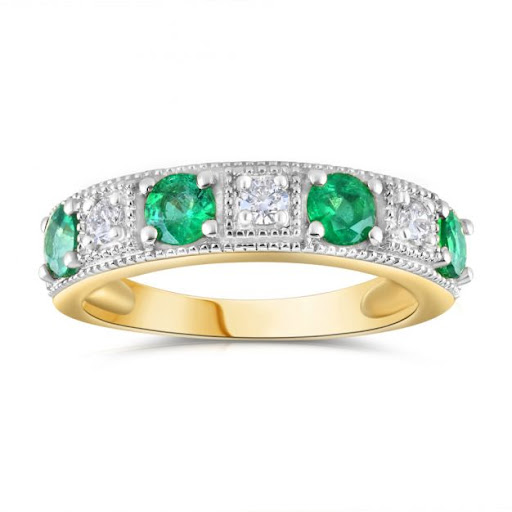The Ultimate Guide To Gemstone Jewellery

Gemstones are stunning jewels that have been used as part of fine jewellery for centuries and gemstone jewellery is a timeless accessory many love to treasure for a lifetime. The pure diversity of gemstones as decorative pieces allows them to be used in a wide variety of extravagant jewellery styles.
But how well do you know gemstones? In this guide, we’ll be exploring the definition of gemstones, their history, which gemstones are traditionally associated with birthstones and more.
What Is A Gemstone?
Gemstones are pieces of mineral crystal, formed naturally in the earth, that have been cut and polished by a specialist jeweller. The crystals have to be mined and can be very hard to find, which makes the resulting gemstones extremely rare - the perfect combination for sophisticated, high-end jewellery.
Gemstones are typically composed of minerals, though they can be grown in labs too. Essentially, the process in the lab mimics the process nature carries out over millions of years, but in a much shorter period of time. This results in an almost identical-looking gem while passing on cost savings to the end customer, as lab-grown diamonds and gemstones are typically cheaper to produce compared to natural diamonds that have been through the mining process.
Natural gemstones can be formed as a result of different reactions below the surface of the earth. For example, diamonds are created deep in the earth and carried above ground by explosions of magma. Other gemstones, such as topaz and aquamarine, are formed by hot fluids and gases which have cooled and solidified over time.
What are the most popular gemstones?
Despite the extensive variety of beautiful gemstones, there are a few which have become very popular due to their exquisite appearance. These are precious stones and the only four (of the roughly 200 gemstones) which fall under this category.
The four precious stones are:
- Rubies
- Emeralds
- Sapphires
- Diamonds
You’ll find each of these types of gemstone adorning high-quality jewellery such as engagement rings which feature gorgeous diamonds and necklaces laden with alluring emeralds or radiant rubies. Each gemstone has a different meaning, which may influence your decision when choosing your next piece of fine gemstone jewellery.
Learn more about the meaning of each gem below.
The History Of Gemstones
The detailed history of gemstones is extensive and dates back billions of years to when the first gemstones were formed.
The oldest gemstone dates back billions of years
One of the oldest gemstones known to man is a piece of zircon, which was found in 2001 and is understood to have been formed around 4.4 billion years ago. This means this piece of zircon was created 165 million years after Earth formed and has remained intact ever since - a true testament to the durability of this gemstone.
Although zircon is the oldest gemstone to be formed on earth, there is another which is known to be extraterrestrial. This gemstone is peridot and is a remnant from the birth of the solar system 4.6 billion years ago.
The first gemstones discovered by man
Despite some gemstones being formed billions of years ago, the history of gemstones discovered by man is considerably more recent by comparison. Habitants across different regions of the earth have discovered different gemstones during varying periods of time.
These are just some of the popular gemstones discovered and the dates they’re known to have been first found on earth:
Hindy Kush region (Afghanistan) – Lapis lazuli found in the Neolithic period
Egypt – Lapis lazuli and amethyst found in 4000 BC
China – Jade found in 3600 BC
India – Diamonds found in 300 BC
Ancient Greece & Rome – Sapphires, garnets and pearls found between 1600 BC and 500 BC
Uses of gemstones
The first uses of gemstones defined the way that we use them today, with much of our practices remaining the same. As it is now, it was common for gemstones to be used as part of artwork, pieces of jewellery, and religious objects, such as crosses.
In ancient Egypt and China, gemstones were used to decorate coffins and tombs, such as Tutankhamun’s tomb, with the king’s mummy wearing gold amulets featuring carnelian, red jasper and lapis lazuli.
During these times, gemstones were generally reserved for the rich, due to their high value.
Gemstones in modern history
From the 1800s onwards precious stones became even more versatile, due to the invention of the steam-driven bruting machine which enabled cutters to shape rounder and more faceted diamonds and other gemstones. This allowed jewellers to achieve more precise cuts and even produce more diverse pieces of jewellery as a result.
Since then, advancements in technology have meant that lasers can be used to cut diamonds and other gemstones. Jewellers can still use saws, however, which use diamond-dusted steel blades.
What Are The Rarest Gemstones?
Tanzanite is widely regarded as the rarest gemstone in the world and can only be found in the Merelani Hills, near the base of Mount Kilimanjaro in Tanzania - hence the name. Due to there being only one source of this gemstone, it’s expected tanzanite supplies could run out in the next 20 to 30 years, making it considerably rarer than diamonds.
Painite is also one of the world’s rarest gemstones, making it into the Guinness Book of World Records after its discovery in 1951. By 2004, only 24 painite gemstones had been found, though there are now believed to be over a thousand due to a series of mines in Myanmar dedicated to producing the gemstone.
Musgravite is extremely rare - and expensive - having been discovered in 1967 and since found in Antarctica, Madagascar, and Greenland in very scarce amounts. This gemstone is extremely rare and often confused with the less-rare taaffeite gemstone, due to similarities in colour and general appearance.
Some other gemstones that are considered to be the rarest in the world are:
- Jadeite
- Alexandrite
- Benitoite
- Larimar
- Black Opal
- Red Beryl
How Are Gems Used In Jewellery?
Gemstones are highly synonymous with jewellery and often feature as the centrepiece of rings, bracelets, necklaces, earrings and more, with the ability to elevate standard gold and silver pieces. Due to their eye-catching and attractive appearance, gemstones have been used to create stunning pieces of jewellery for centuries.
Diamonds are one of the four precious stones which are most commonly used in jewellery. From bracelets and chains encrusted with small diamonds to engagement rings that feature a diamond as the star of the show, diamonds are extremely versatile and are undeniably eye-catching.
Some gemstones are more suitable for use in jewellery and daily wear than others, as determined by their hardness.
The Mohs Hardness Scale
One key way to find out which gemstones are the most durable is to use the Mohs Hardness Scale. Objects measured on the scale will receive a hardness rating, with 10 being the hardest and 1 being the softest.
Diamonds, rubies and sapphires are all featured at the top end of the scale, with a hardness rating of 10, 9 and 9 respectively, while gypsum and talc feature at the lower end with a rating of 2 and 1. Typically, the higher the hardness rating a gemstone has, the more durable it will be and the longer it will last as part of a piece of jewellery.
Gemstones at the lower end of the scale, such as amber, which has a rating of 2 on the Mohs Hardness Scale, are unlikely to last for long periods of time and will require special care to maintain their condition.
How are gems made into jewellery?
Once the gemstones have been mined, they must be cut and polished before being used in pieces of jewellery, as they’re not as aesthetically pleasing when in their naturally occurring form.
There are different ways that gemstones can be cut to prepare them for use in jewellery. Generally, transparent gems are faceted, so they reflect light and sparkle, while opaque gems are cut into a rounded, more smooth shape to suit different jewellery styles.
Some of the most popular styles of jewellery to feature gemstones are:
Gemstone Meaning
Some gemstones are said to have certain meanings and carry powers that are thought to boost energy, increase confidence and even attract love. Gemstones have been used in many different cultures across the world by those who believe they can benefit from gemstones’ ability to protect, heal, guide and enlighten.
When gemstones are worn in jewellery and kept close to the body, their properties are said to be amplified. This has led many who believe in these abilities to wear amulets, bracelets and rings featuring the special gemstones.
What does each gemstone mean?
Each type of gemstone has a specific meaning, allowing you to choose the gemstone that has properties and powers you would like to benefit from.
These are some of the most popular gemstones types and the properties they are thought to provide:
Aquamarine
Imparts courage and reduces feelings of anxiety and fear.
Black Onyx
Offers protection and provides determination when dealing with conflict.
Amethyst
Provides clarity and brings calmness.
Turquoise
Gives strength and empowerment, offering guidance.
Emerald
Aids fertility and incites peacefulness.
Red Jasper
Ensures emotional resiliency, strength and courage.
Ruby
Promotes love and opens the heart.
Everything You Need To Know About Birthstone Jewellery
Some gemstones are believed to have connections with zodiac signs, which are said to depict personality traits. These are known as ‘birthstones’ and are believed to bring the wearer good luck, protection, and offer other beneficial properties when worn during the corresponding month.
Here’s a list of the most popular birthstones:
|
Month |
Birthstone |
|
January |
Garnet |
|
February |
Amethyst |
|
March |
Aquamarine |
|
April |
Diamond |
|
May |
Emerald |
|
June |
Pearl |
|
July |
Ruby |
|
August |
Peridot |
|
September |
Sapphire |
|
October |
Opal |
|
November |
Topaz |
|
December |
Tanzanite |
Often, the birthstone is given as a gift to those born in the relevant month, allowing them to reap the benefits of the gemstone in their birth month. Learn more about the powers and properties of each birthstone in our blog, ‘What Is My Birthstone?’.
Do Gemstones Have Value?
Gemstones have incredible value and, generally, the rarer the stone is, the higher its value. This can happen when there is a limited number of gemstones in circulation, as a result of its scarceness in the earth. If a gemstone is particularly large, this will increase its value too, with some of the world’s largest gemstones even beyond the budget of millionaires.
Rare gemstones, such as opals, emeralds, rubies and sapphires are likely to retain their value, if not increase, regardless of fluctuations in other currencies. Other factors will influence the value of the stone too, such as the colour, cut, carat and clarity - known as the 4 Cs. Each of these factors are used to grade a gemstone and determine its value.
When the 4 Cs are applied to coloured gemstones, the colour factor is further divided into four elements. This includes Hue (name of the colour), Saturation (vividness/brightness), Tone (depth of colour) and Coverage (colour consistency).
How To Choose A Gemstone
There are many different factors to consider when choosing a gemstone. If you’re buying a gemstone as a gift, you may look for different qualities than if you were buying for yourself.
Weigh up each of these factors to help you make a more confident decision when purchasing your magnificent gemstone.
Durability
If you’re planning on wearing your gemstones in a piece of jewellery on a daily basis, it’s important to choose a gemstone that can withstand wear and tear. Shopping at the top end of the Mohs Hardness Scale will help you select a gemstone that is resilient and suitable for regular wear.
Colour
There are a stunning array of different colours to choose from across a wide range of gemstones. If a particularly beautiful gemstone catches your eye whilst browsing, that’s probably the one for you.
Quality
If you’re looking for a high-end, refined gemstone, evaluate its clarity first. It’s extremely rare to find a diamond without blemishes, but the fewer imperfections there are on the gemstone, the higher the price is likely to be.
When inspecting the quality of a gemstone, you can use the clarity grading system which is split into six categories, with 11 sub-categories in total:
- Flawless (FL)
- Internally Flawless (IF)
- Very, Very Slightly Included (VVS1 & VVS2)
- Very Slightly Included (VS1 & VS2)
- Slightly Included (SI1 & SI2)
- Included (I1, I2 & I3)
Meaning
Often, gemstones are chosen purely for the meaning alone, especially when they are thought to offer a particular set of benefits or are relevant to a specific birth month. Exploring the meaning of each gemstone can narrow down your search and guide your choice, especially if you wish to give a piece of gemstone jewellery as a gift with certain symbolism.
Cost
Budget is always a factor in any jewellery purchase, so it’s important to determine how much you want to spend before falling in love with a gorgeous gemstone that’s out of your price range.
How To Clean Gemstone Jewellery
When cleaning your gemstones, the most important thing to remember is that even if your gem has a high rating on the Mohs Hardness Scale, it’s not necessarily resistant to all types of exposure. When buying your gemstone, you should ask a trusted jeweller for advice on how to clean it to reduce the chance of unknowingly causing damage.
Once you’re confident that your gemstone can be cleaned at home, using a bowl of warm water and a small amount of detergent to soak your jewellery is a good place to start.
Once soaked for around 5-10 minutes, you should use a very soft brush to clean your gemstone.
If there are small accumulations of dirt along ridges and grooves in the jewellery, using a toothpick works well to remove this. Be gentle, though, as you don’t want to be too harsh with a sharp object - patience is a virtue.
Once you’ve finished cleaning your gemstone jewellery, rinse it and shake off any excess water. You can now polish the gemstone and make sure it’s completely dry to prevent any water spots from tarnishing your beautiful piece of jewellery.
Top tip for lasting care: Apply all of your fragrances before putting your jewellery on, as these chemicals can reduce your gemstone’s brilliance and, in extreme cases, severely damage it - pearls are particularly susceptible to this.
How To Repair / Fix Gemstones
If you’ve invested in a gorgeous gemstone or received one as a gift from a loved one, finding out that it’s damaged can feel like the end of the world. But don’t worry, there are some repairs you can make to restore your exquisite gemstone to its former glory.
Scratches and chips
If there are small scratches and/or chips on your gemstone, you may be able to use polish on the surface of the gem to remove them. If the chips are large or deep, you may be able to get them buffed out or re-faceted to remove the damage completely.
Cracks
If the crack is deep, and the damage can’t be buffed out, you can use epoxy to seal the crack, but you should first contact your jeweller for further advice. Using clear epoxy and mixing this with acetone at a ratio of 50:50 will create the perfect solution to penetrate the crack. Once filled, leave the epoxy to dry for 24 hours. This will restore the integrity of the gemstone and prevent the crack from worsening.
Loose gemstones
When gemstones become loose, this is usually because the prongs that hold them in place have become bent or damaged. Take your gemstone piece to a jeweller, who will reset the prongs and ensure your gemstones remain securely in place.
The Best Place To Buy Gemstone Jewellery
When buying timeless, high value jewellery featuring stunning gemstones, it’s important to ensure you’re purchasing from a reliable stockist. Hatton Jewellers is proud to say that we are one of the UK’s most trusted stockists and can provide a certificate of authenticity with every purchase you make along with a gemological report for diamond jewellery.
Gemstone jewellery can be a considerable investment but it should also be an enjoyable buying experience, which is something we aim to provide with our first-class customer service. Don’t hesitate to get in touch if you’d like to learn more about the gemstone jewellery we have available.
Our Favourite Hatton Jewellers' Gemstone Jewellery
At Hatton Jewellers, we stock a wide range of stunning gemstone jewellery that is perfect for treating yourself or a loved one. Our jewellery is high-quality and features some gorgeous pieces, but we do have a few favourites.
Ruby rings & earrings
The ruby is a stunning gemstone and an amazing way to express your love for another. Truly unique in its appearance and rich with vibrant colour, this 0.90ct Ruby Cluster Ring is one of our bonafide favourites. Another one of our top picks is this pair of beautiful 1.20ct Ruby Stud Earrings, which is crafted from 9ct yellow gold.

Diamond rings & chains
Diamonds are a timeless classic and are extremely versatile, whether dazzling as a stand-out gem on an engagement ring or as part of an iced-out chain. Some of our favourite diamond jewellery includes this 0.40ct Diamond Aquamarine Ring and this Solid Gem-set Oval Belcher Chain.

Emerald eternity rings & earrings
Emeralds are known for their brilliant green colour which looks stunning when paired with contrasting colours such as white and yellow gold. Some of our most beloved emerald pieces include this fabulous 0.50ct Emerald Eternity Ring and this pair of Emerald Halo Style Stud Earrings.

Other gemstone jewellery
If you’re looking for something a little different but still want to wear a beautiful gemstone, explore a few of our other pieces of jewellery.
Garnet - Yellow Gold, Diamond & Garnet Ring
Blue Topaz - White Gold, Diamond & Blue Topaz Ring
Sapphire - White Gold, Diamond & Sapphire Ring
Amethyst - White Gold, Diamond & Amethyst Ring
For updates on gemstone jewellery and more, why not bookmark our blog? You can also follow us on Instagram and Facebook and share your favourite gemstone jewellery with us.

